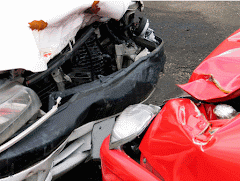Trains are one of the primary means of transport for millions of Americans but after the deadly DC train crash, the awful truth is out.
More than a third of the trains of the largest transit systems are in poor or marginal condition. In fact, according to a report from the National Transportation Safety Board, these old subway cars lack “survivable space” and experience the worst damage.
It can be recalled that the train which caused the crash was an older 1000 Series running on automatic mode when it hit the stopped train. In one report, 50 feet of the 75-foot length of the lead car of the moving train was mangled.
All of the nine fatalities from the crash came from the moving train.
NTSB has warned Metrorail, as far back as 2006, to phase out the old fleet because of concerns over how well it would fare in a crash and how it has a tendency to compact in intense collisions. However, because NTSB’s power is merely regulatory and investigative, it lacks the capacity to force the implementation of its recommendations.
But transit officials say the lack of money has constrained them from implementing NTSB’s recommendation. It was estimated to need $888 million to replace the 296 rail cars that were built more than 30 years ago. It also claimed that since they couldn’t afford to replace the older models, they’ve taken steps to keep the train cars in good condition.
Nine people have died and more than seventy other passengers were injured after the crash. The Metro's board has approved of a $250,000 hardship fund to provide financial relief for victims of the collision, to assist them with their medical, funeral and other immediate expenses.
It is an unfortunate fact that safety is now a luxury for train passengers. Because of the high costs of facility and train upgrade, there is a high risk for railway accidents.
Commuters now have to pay the price for these transit system’s inaction but in the end, what Metrorail have cut in costs will become victims’ compensation.
More than a third of the trains of the largest transit systems are in poor or marginal condition. In fact, according to a report from the National Transportation Safety Board, these old subway cars lack “survivable space” and experience the worst damage.
It can be recalled that the train which caused the crash was an older 1000 Series running on automatic mode when it hit the stopped train. In one report, 50 feet of the 75-foot length of the lead car of the moving train was mangled.
All of the nine fatalities from the crash came from the moving train.
NTSB has warned Metrorail, as far back as 2006, to phase out the old fleet because of concerns over how well it would fare in a crash and how it has a tendency to compact in intense collisions. However, because NTSB’s power is merely regulatory and investigative, it lacks the capacity to force the implementation of its recommendations.
But transit officials say the lack of money has constrained them from implementing NTSB’s recommendation. It was estimated to need $888 million to replace the 296 rail cars that were built more than 30 years ago. It also claimed that since they couldn’t afford to replace the older models, they’ve taken steps to keep the train cars in good condition.
Nine people have died and more than seventy other passengers were injured after the crash. The Metro's board has approved of a $250,000 hardship fund to provide financial relief for victims of the collision, to assist them with their medical, funeral and other immediate expenses.
It is an unfortunate fact that safety is now a luxury for train passengers. Because of the high costs of facility and train upgrade, there is a high risk for railway accidents.
Commuters now have to pay the price for these transit system’s inaction but in the end, what Metrorail have cut in costs will become victims’ compensation.























